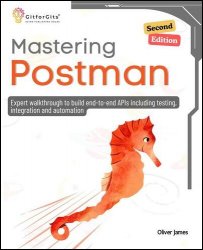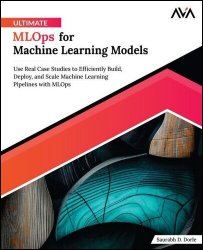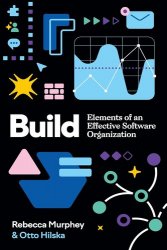 Название: A Robotic Framework for the Mobile Manipulator: Theory and Application
Название: A Robotic Framework for the Mobile Manipulator: Theory and ApplicationАвтор: Nguyen Van Toan, Phan Bui Khoi
Издательство: CRC Press
Серия: Artificial Intelligence and Robotics Serie
Год: 2023
Страниц: 116
Язык: английский
Формат: pdf (true)
Размер: 29.8 MB
By proposing and forming a mobile manipulator for modern multi-floor buildings, A Robotic Framework for the Mobile Manipulator: Theory and Application helps readers visualize an end-to-end workflow for making a robot system work in a targeted environment. From a product-oriented viewpoint, this book is considered as a bridge from theories to real products, in which robotic software modules and the robotic system integration are mainly concerned. In the end, readers will have an overview of how to build and integrate various single robotic modules to execute a list of designed tasks in the real world, as well as how to make a robot system work independently, without human interventions. With references and execution guidelines provided at the end of each chapter, the book will be a useful tool for developers and researchers looking to expand their knowledge about the robotics and the robotic software.
Robotic applications have been increasingly popular in human activities. It is clear that the development of robotic technology will be accelerated more strongly if its research approaches are simpler and easier to apply in practice. From a product-oriented viewpoint, operating a robot with a low level of automation is really challenging for users, especially users without deep knowledge of robotics and systems. Therefore, making a flexible robot system that can easily respond to changes in its targets and working environments is a crucial issue. If the robot can complete its missions at a high or full level of automation, human labor and human errors will be dramatically reduced. To do this, a robotic decision-making system must be conducted so that the robot can work without deep interventions of operators. Such robot system integration brings significant benefits: (1A1) speed and consistency of executions of tasks are increased, (1A2) accuracy and precision of robot manipulations are improved, (1A3) human labor and costs are reduced, and (1A4) a safe working environment is created since human errors are reduced with simple or no required operations. However, the system integration task is usually underestimated in traditional designs. Almost all research works have just focused on single robotic modules while unexpected and unforeseen issues have usually been raised during the integration process, regarding interorganizations and inter-subsystems.
Single robotic modules and the system integration are then conducted on the Robot Operating System 2 (ROS2) and presented in remaining chapters as follows: in Chapter 2, a task-oriented approach is used to propose hardware and software modules for a robot system. For illustration, a robot system is proposed to work in modern multi-floor buildings. After that, a robotic framework is constructed to help the proposed robot system to change its working floors. Next, the kinematics and dynamics of the proposed robot system is analyzed in Chapter 3. In Chapter 4, core features of mobile robot navigation are conducted, including localization and mapping, global positioning, environment modeling, path generation, and following with collision avoidance. In Chapter 5, the manipulator manipulation work of the proposed robot system is briefly presented to adapt software system, regarding the formulation of the manipulator modeling, the trajectory planning, and control. In Chapter 6, some perception works are presented to help the proposed mobile manipulator to change its working floors successfully, including elevator button detection, elevator button light-up status checking, elevator door status checking, human detection, and floor number recognition. Finally, in Chapter 7, a robotic decision-making system is presented to integrate single robotic modules, whose purpose is to help the proposed robot system switch its missions automatically and work without human interventions. In inheritance, other tasks can be straightforwardly added to the presented framework.
To be compatible with presented robotic modules, the robot system integration is conducted on the Robot Operating System (ROS), which is a middleware framework, including a set of open-source libraries and tools to build robot applications. In ROS, finite state machines (FSMs) and Behavior Trees (BTs) are used to model complex robot behaviors and multi-step tasks. Here, FSM is a computational model based on a finite number of states of a system, which has been used for many years as a task-switching architecture. The concept of state is familiar and is famously illustrated by a simple mechanism of a drop-arm turnstile. This drop-arm turnstile is a form of gate with some rotating arms at waist height, which allows one person to pass at a time by inserting a coin (or other methods of payment). At first, its arms are locked to prevent persons from passing through. To pass through the turnstile, the commuter must deposit a coin in a slot on the turnstile to unlock and allow its arms to rotate. Two possible states of the turnstile are “locked” and “unlocked.” Two possible inputs that affect its states are “deposit a coin” and “push the arms.”
Скачать A Robotic Framework for the Mobile Manipulator: Theory and Application
[related-news] [/related-news]
Комментарии 0
Комментариев пока нет. Стань первым!















